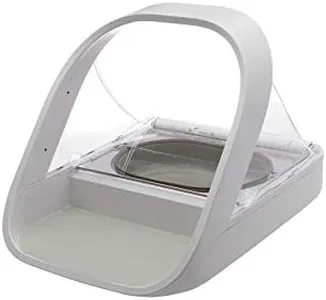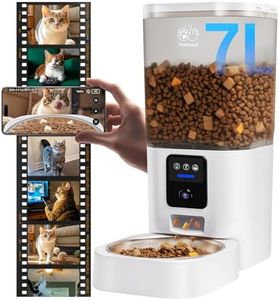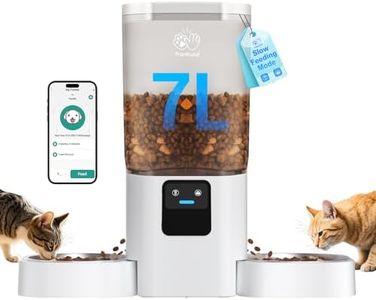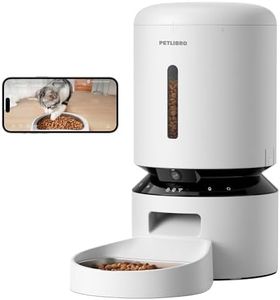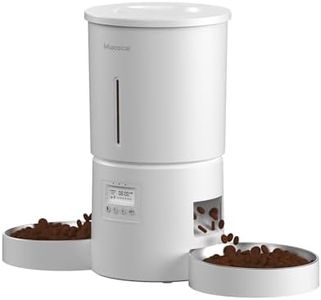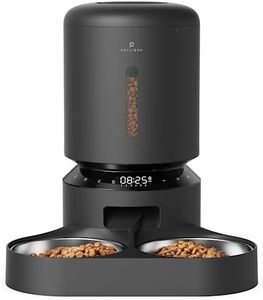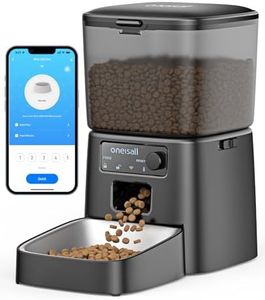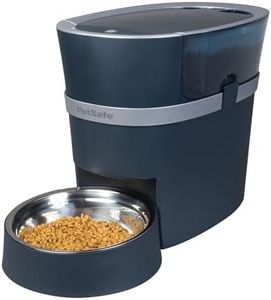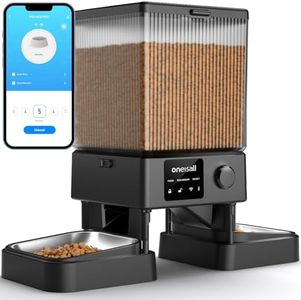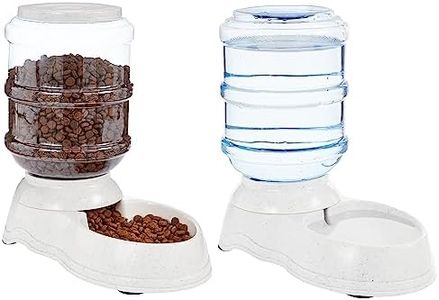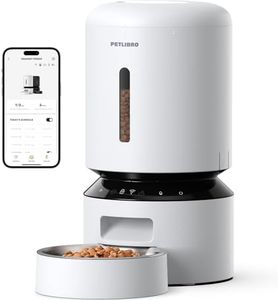We Use CookiesWe use cookies to enhance the security, performance,
functionality and for analytical and promotional activities. By continuing to browse this site you
are agreeing to our privacy policy
10 Best Automatic Pet Feeders
From leading brands and best sellers available on the web.Buying Guide for the Best Automatic Pet Feeders
Choosing the right automatic pet feeder is an important decision for any pet owner who wants to ensure their furry companion is always well-fed, even when they’re not at home. The main goal is to find a feeder that fits your pet’s specific needs, your lifestyle, and your schedule. Think about whether you need to feed dry or wet food, how often your pet needs to eat, and if you want any smart features that connect to your phone for added convenience. Understanding the key features will help you narrow down options confidently.Food CapacityFood capacity refers to how much food the feeder can hold at one time. This is important because it determines how often you’ll need to refill the feeder, which makes a difference if you travel frequently or work long hours. Feeders come in small, medium, and large capacities—smaller capacities (1-2 liters) are suitable for single, small pets or short absences, while larger capacities (over 4 liters) are better for multiple pets or longer trips. Consider your pet’s size, how much they eat daily, and how often you want to refill when choosing the right capacity.
Portion ControlPortion control means being able to set the precise amount of food dispensed at each meal. This is crucial for pets that need a regulated diet to prevent overeating or for those with specific health needs. Some feeders let you adjust portions by grams or cups, while others offer preset amounts. If your pet is on a strict diet, or you want to control their weight, look for models with fine-tuned controls. For pets that can self-regulate, basic controls may be enough.
Feeding Schedule OptionsFeeding schedule options refer to how many times a day and at what times the feeder can release food. Basic feeders may only offer a couple of preset times, whereas more advanced models let you set multiple meals per day at custom times. If your pet thrives on a regular routine or requires multiple small meals, opt for a feeder with detailed scheduling. Simpler needs, like just breakfast and dinner, can be met with basic models.
Food Type CompatibilityFood type compatibility is about whether the feeder can handle dry kibble, semi-moist, or wet food. Most automatic feeders are designed for dry kibble, which stores well and doesn’t spoil quickly. Some feeders can also manage moist or wet food but may need refrigeration or more frequent cleaning. If your pet eats a special diet or prefers wet food, ensure the feeder is built for that type to avoid clogging or spoilage.
Power Source and BackupThe power source refers to how your feeder operates—using batteries, plugging into an outlet, or both. Backup power (like batteries in addition to a wall plug) ensures the feeder works during power outages, which is vital if you’re often away. If you want maximum reliability, look for models that offer both options so your pet never misses a meal, no matter what.
Ease of CleaningEase of cleaning is about how simple it is to take apart and wash the feeder. Since pet feeders handle food, regular cleaning is important for health and hygiene. Some feeders have dishwasher-safe parts, while others require hand washing. If you’re looking to save time and effort, choose a feeder with easily removable and washable components.
Connectivity and Smart FeaturesSome automatic pet feeders come with smart features, such as Wi-Fi or Bluetooth connectivity, allowing you to control or monitor feeding from your phone. This is helpful if you travel or want to check in on your pet’s feeding from anywhere. If remote control or notifications are valuable to you, seek feeders with a companion app or voice assistant compatibility. If simplicity is preferred, a manual or non-connected feeder will suffice.
